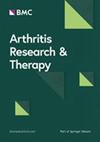crp -白蛋白淋巴细胞指数(CALLYI)作为与骨关节炎相关的风险预测生物标志物
IF 4.9
2区 医学
Q1 Medicine
引用次数: 0
摘要
c反应蛋白-白蛋白淋巴细胞指数(CALLYI)作为一种新型的生物标志物,从三个方面对人体进行了综合评价。然而,CALLYI与骨关节炎(OA)发病率之间的关系尚不清楚。本横断面研究调查了美国成人CALLYI与OA之间的潜在关系,建立了临床预测模型,并验证了其有效性。研究队列包括18624名美国成年人,他们参加了1999年至2010年的国家健康和营养检查调查(NHANES)。CALLYI计算公式为:白蛋白*淋巴细胞/ CRP * 10。构建了3个加权多元回归模型来研究CALLYI与OA之间的相关性。采用限制三次样条(RCS)来评价这两个变量之间的非线性关系。进行亚组分析以检查相互作用。预测模型采用单变量logistic回归、二元logistic回归、最小绝对收缩和选择算子(LASSO)进行变量选择。采用决策曲线分析(DCA)和受试者工作特征(ROC)曲线分析评估模型的预测性能。本研究分析的总样本量为18,624例,其中1,977例(10.62%)诊断为OA。CALLYI均值为5.13(2.12,12.86)。多因素logistic回归模型显示CALLYI升高与OA呈负相关。完全调整后的模型3显示,与CALLYI的Q1相比,第四季度OA风险显著降低28% (OR = 0.72 95% CI: 0.59-0.88, p = 0.001)。亚组分析未发现任何显著的相互作用(p < 0.05)。此外,使用RCS, CALLYI与OA之间存在显著的非线性关系(p < 0.0001)。经过变量筛选,我们构建了一个结合CALLYI的OA预测模型,并将结果用nomogram进行可视化。曲线下面积(AUC)为0.825 (95% CI: 0.817-0.834), DCA提示该模型具有临床意义。本研究利用NHANES统计数据,首次建立了CALLYI与OA之间的非线性负相关关系,在亚组分析中没有观察到显著的相互作用。在纳入CALLYI的OA预测模型中,我们验证了该模型的有效性和临床实用性,为CALLYI可以作为OA风险预测的生物标志物提供了证据。然而,更大的多中心前瞻性队列研究是必要的,以减轻横断面设计和自报告OA诊断固有的局限性。本文章由计算机程序翻译,如有差异,请以英文原文为准。
CRP-Albumin-Lymphocyte index (CALLYI) as a risk-predicting biomarker in association with osteoarthritis
As a novel biomarker, the C-reactive protein-Albumin-Lymphocyte Index (CALLYI) offers a comprehensive evaluation of the human body from three perspectives. However, the association between CALLYI and the incidence of osteoarthritis (OA) remains unclear. This cross-sectional study investigates the potential relationship between CALLYI and OA in US adults, develops a clinical prediction model, and validates its effectiveness. The study cohort consisted of 18,624 U.S. adults who participated in the National Health and Nutrition Examination Survey (NHANES) from 1999 to 2010. The CALLYI was calculated using the formula: albumin * lymphocytes / CRP * 10. Three weighted multiple regression models were constructed to investigate the correlation between CALLYI and OA. Restricted cubic splines (RCS) were employed to evaluate the nonlinear relationship between these two variables. Subgroup analyses were conducted to examine interactions. Univariate logistic regression, binary logistic regression, and least absolute shrinkage and selection operator (LASSO) were utilized for variable selection in the prediction model. Decision curve analysis (DCA) and receiver operating characteristic (ROC) curve analysis were applied to assess the predictive performance of the models. The total sample size analyzed in this study was 18,624, of which 1,977 (10.62%) were diagnosed with OA. And the mean value of CALLYI was 5.13 (2.12,12.86). The multivariate logistic regression model revealed a negative correlation between elevated CALLYI and OA. The fully adjusted Model 3 demonstrated a significant 28% reduction in OA risk in the Q4 compared to the Q1 of CALLYI (OR = 0.72 95% CI: 0.59–0.88, p = 0.001). Subgroup analyses did not reveal any significant interactions (p > 0.05). Additionally, a significant non-linear relationship between CALLYI and OA using RCS (p < 0.0001). After variable screening, we constructed an OA prediction model incorporating CALLYI, and the results were visualized using a nomogram. The area under the curve (AUC) was 0.825 (95% CI: 0.817–0.834), and DCA indicated that the model holds clinical significance. This study, utilizing NHANES statistics, is the first to establish a nonlinear negative relationship between CALLYI and OA, with no significant interaction observed in subgroup analyses. In the OA prediction model incorporating CALLYI, we validated the effectiveness and clinical utility of this model, providing evidence that CALLYI can serve as a biomarker for OA risk prediction. Nevertheless, larger multicenter prospective cohort studies are necessary to mitigate the limitations inherent in cross-sectional designs and self-reported OA diagnoses.
求助全文
通过发布文献求助,成功后即可免费获取论文全文。
去求助
来源期刊

Arthritis Research & Therapy
RHEUMATOLOGY-
CiteScore
8.60
自引率
2.00%
发文量
261
审稿时长
14 weeks
期刊介绍:
Established in 1999, Arthritis Research and Therapy is an international, open access, peer-reviewed journal, publishing original articles in the area of musculoskeletal research and therapy as well as, reviews, commentaries and reports. A major focus of the journal is on the immunologic processes leading to inflammation, damage and repair as they relate to autoimmune rheumatic and musculoskeletal conditions, and which inform the translation of this knowledge into advances in clinical care. Original basic, translational and clinical research is considered for publication along with results of early and late phase therapeutic trials, especially as they pertain to the underpinning science that informs clinical observations in interventional studies.
 求助内容:
求助内容: 应助结果提醒方式:
应助结果提醒方式:


